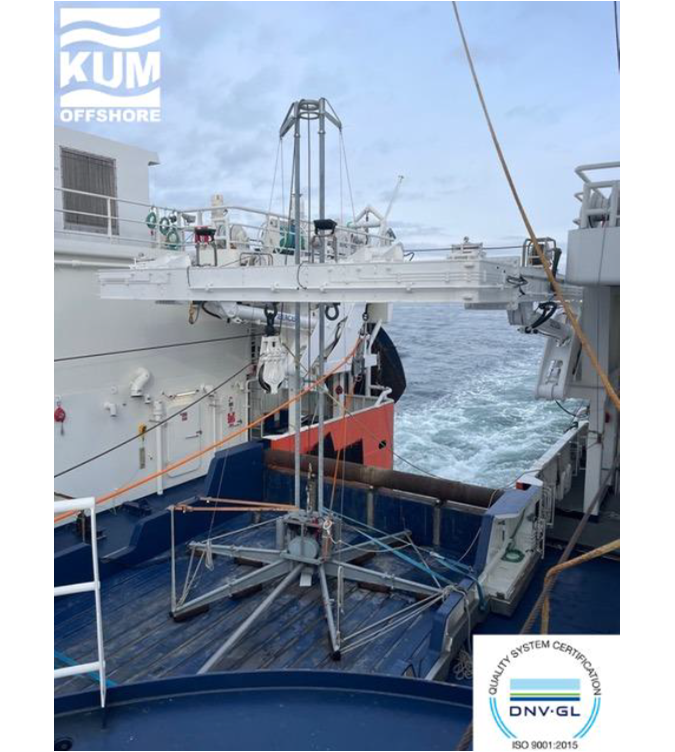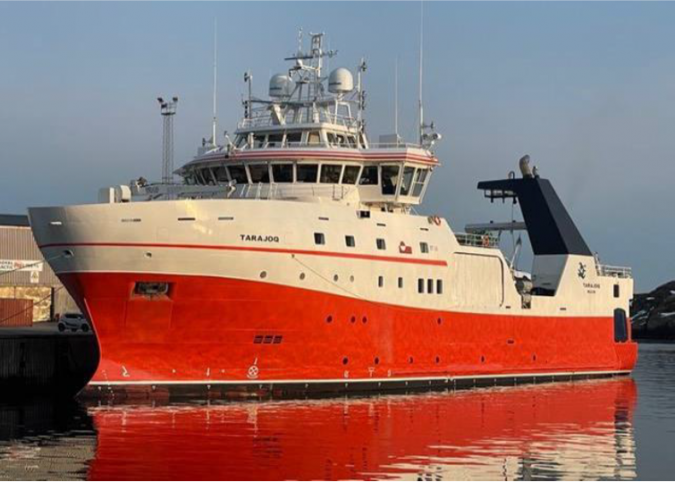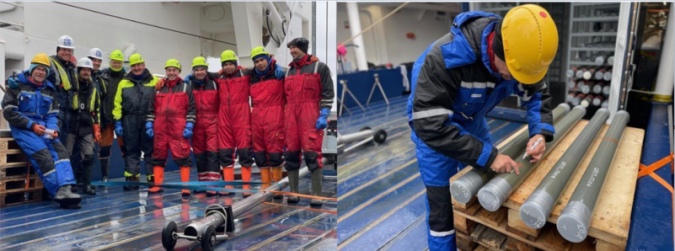When research institution the Geological Survey of Denmark and Greenland (GEUS) needed to survey the ocean floor in the Davis Strait off the coast of Greenland, it partnered with KUM Offshore (KUMO), a leading global provider of advanced subsea equipment, to deliver the expertise and technology to take sediment core samples.
KUMO’s vibrocorer technology (originally developed by German company MED-C, now part of the KUM Group of Companies) uses an electrical motor to generate a vibration force that drives a barrel into sediment. The core barrel has an inner diameter of 10cm, length of 5.7m and vibration of 28Hz, making it ideal for extracting any type of dense and compacted sediments. The equipment is DNV-certified, which provides assurance of its high quality and suitability for use in the marine industry.
Using vibrocorer technology rather than alternative coring methods allowed GEUS to obtain undisturbed cores of lengths of up to almost six metres, which is crucial for investigating the geological properties of sea-floor sediments.
Hitting hard rock
KUMO’s projects typically take place in shallower, nearshore waters; however, during this expedition, the location was remote and the water depth varied between 90m and 200m. This is the first time that the KUMO team has worked in Greenland’s waters and conditions were extreme. As such, the team faced some challenges throughout the expedition. “No two projects are the same, and while we can anticipate what conditions will be like, we can never be certain until we are in situ. There were a few challenges in this project, including the geology, the weather and the sea state,” said Ivan Starostin, director at KUMO Europe. “Thanks to our highly qualifi ed team, we were able to overcome any issues with our quick thinking and ingenuity, and to adapt our practices while out at sea. On a typical expedition, we would expect some mud, sand, gravel and rocks and experience up to 3.5 tons of pull when extracting the core,” explained Ivan, “but the geology of Greenland means there is a glacial sediment called till present, which is like a very wet and dense cement mix. This is the first time that we have worked with till sediments, and we were experiencing eight to nine tons of pull while trying to extract the core. This had an adverse impact on the top plug of the vibrocorer and the catcher, which struggled to resist the pressure, and we needed to rectify this immediately.”

Overcoming challenges
As a service provider, KUMO has vast experience in not simply supplying equipment, but working closely with its clients to deliver their projects and overcome any challenges. For example, with no heave compensators on the A-frame, the team needed a way to bring the cores up under changing levels of pull force. They were able to achieve this by redesigning the shackles and top plug.
“We replaced the existing shackles with heavy-duty 16-ton shackles. However, because these shackles are much larger than the previous ones, there was a risk of them catching on the equipment. We engineered on the fly and welded preventers to avoid any damage and bring the cores up safely and intact,” continued Ivan.

Operating in extreme weather
The weather conditions and resulting sea swell also posed a challenge. The team was operating in forces of up to 7 Beaufort and 3.5m waves, which created issues with tension on the winch. The KUMO team was able to solve this by adapting the extraction procedure to ensure a constant tension on the winch to limit the pull force. They also established a more responsive communication method between the winch and the vibrocorer operators, resulting in less extraction force needed and a reduced risk of equipment damage.

Successful expedition.
Despite the harsh conditions of the geology and the weather, a total of 79 cores were taken. These cores were cut into 1.4m lengths and placed in a container for further analysis on dry land. GEUS was impressed with the way in which the KUMO team worked to resolve challenges.
“We are incredibly pleased with the outcome of the project and how our team overcame the challenges, working efficiently to obtain a high volume of samples in just four weeks,” concluded Ivan. “Thanks to the clever thinking and robust vibrocorer equipment, this has been a successful expedition.” KUMO’s vibrocorer was originally developed by MED-C in Rostock, Germany, and has been successfully used in projects worldwide since 1989. The equipment has been continuously developed and improved upon, and with MED-C becoming part of KUM Group of Companies in 2022, the vibrocoring service has reached new heights.

